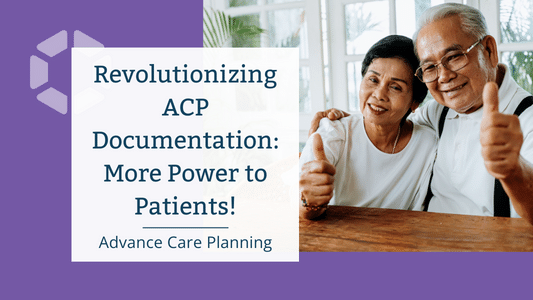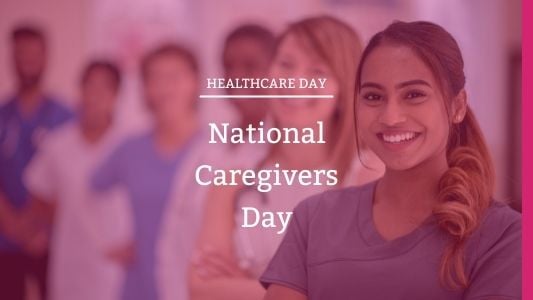
Part Three of Our Six-part Series: Confronting Advance Care Planning Misconceptions
Welcome back to our blog series on Advance Care Planning (ACP) controversies. Our previous post – The Crucial Role of Healthcare Agents in Advance Care Planning – stressed the need to designate a healthcare surrogate and involve them in ACP discussions so they can effectively advocate on the patient’s behalf when they are unable to communicate their values. Today, we transition into exploring the art of drafting actionable advance directives that precisely embody individuals' healthcare preferences.
The burden of static and impractical advance care planning documents.
Advance care planning is an important aspect of the healthcare delivery, focusing on ensuring goal-concordant care for patients nearing the end of life or those who might lack decisional capacity in the future. It is a support system for adults that aids in:
- Mutual understanding and sharing of values, goals, and preferences regarding future medical care decisions;
- Choosing and preparing a trusted individual(s) to make these decisions; and
- Documenting these wishes for future reference.
However, a crucial problem has emerged in the field of ACP, namely the issue of static and vague legal documentation. Our current system is often bogged down with paper documents laden with medical and legal jargon. These documents do not effectively reflect patient wishes with actionable information, and they create barriers to ACP, especially for marginalized populations.
A 2021 research study explains that many adults, particularly those at risk due to conditions such as COVID-19, have not adequately planned for admission to an ICU. Why? The legal language used in most advance directives, and the varying state-to-state statutory requirements for things such as a witness or notary, are significant obstacles to effective results.
The checkbox syndrome and the need for change.
For many, ACP often degenerates into a checkbox exercise, lacking in-depth discussions about a patient's prognosis, the impact of future medical decisions on the patient's quality of life, and realistic plans for implementing the patient's wishes. Individuals' preferences are not static but are shaped by several factors, including age, physical and cognitive function, culture, family preferences, clinical advice, and perceived caregiver burden. All these factors fluctuate over time, reinforcing the need for a dynamic, adaptable, and user-friendly ACP process and documentation.
It's time to move away from eliciting one-time preferences and documenting decisions on paper documents. Advance care planning is not a check-the-box, one-and-done exercise. It's a process in which patients, residents, members, and their loved ones should be able to actively engage in to make well-informed future care decisions. And we can facilitate this shift by using video technologies and self-guided ACP tools individuals can access at their convenience.
The importance of clarity and direction.
Treatment choices near the end of life are complex, uncertain, emotionally charged, and constantly evolving. Providing clear direction to loved ones and medical teams is essential, yet it's an area where many advance care plans fail. Why? Existing paper forms often provide vague and sometimes conflicting goals for end-of-life care, leading to disagreements between patients, families, surrogates, and clinicians. Even the legal nature of advance directives can hinder ACP conversations.
In addition, the documentation problem is further complicated when patient preferences are inconsistent or hard to apply in real-life situations, leaving medical providers without clear guidance. Given these limitations, it’s clear that a set-it-and-forget-it approach to advance directives is not sufficient. If we’re going to truly improve the delivery of goal-concordant care, the process must be simple and always allow for preference updates as circumstances change.
Leveraging technology for dynamic and personalized ACP.
Innovative ACP trailblazers leverage best in class technology solutions to overcome shortfalls in the checkbox approach. Currently existing ACP software tools allow creation of dynamic actionable digital documentation that can be easily updated to reflect changing circumstances and values. For example, MyDirectives for Clinicians™ (MyDC) already offers:
- An intuitive set of questions and answers to guide the ACP discussion with responses used to automatically populate state-specific and branded forms. This documentation approach helps bridge the legal and medical jargon gap between what an individual wants and the information a healthcare provider needs to deliver goal concordant care.
- Ability to upload a copy of pre-existing paper ACP documents and portable medical orders, saving patients from having to recreate these documents from scratch.
- Capability to use a mobile device camera to scan individual ACP document pages when an individual doesn’t have a digital copy. Document pages are then consolidated into one complete document. Mobile document scanning is a valuable option for home health and hospice agency providers in the field.
- Option to capture patient voice via video recordings on specific medical goals, treatment priorities, and care preferences.
- Flexibility to modify ACP documents by simply logging into their MyDirectives account 24/7/365 and changing the answers to any of the prior responses to reflect their most current thinking.
By making ACP more patient-centered and adaptable, we can improve the quality of end-of-life care and ensure that patient wishes are accurately reflected and respected.
Final thoughts on more effective advance directives.
Crafting advance directives that clearly communicate one's wishes is paramount to guaranteeing that individual-specific healthcare preferences are respected. By tackling the challenges of vagueness, incompleteness, and irregular updates, we can enhance the dependability and utility of these crucial documents.
Empowering individuals with education, resources, and accessible technology is the key to surmounting barriers obstructing advance directive completion. Through open communication, continual education, and effortless access to resources, we can inspire individuals to actively participate in shaping their end-of-life care, ensuring their wishes are respected.
Don't miss our next installment "Emergency Ready: Smashing the Barriers to ACP Document Use." If you haven't already, subscribe to our blog now to receive more invaluable insights and recommendations to help you better navigate the world of Advance Care Planning.
Let’s get started on digital ACP together
Secure, Interoperable, Accessible.
MyDirectives offers the only digital advance care planning (ACP) tools and interoperable cloud-based storage that is HITRUST Risk-Based 2-year Certified.






